QPHY-SAS2
The LeCroy QPHY-SAS2 Test Solution provides automated control for the SDA 8 Zi series of oscilloscopes for performing all of the transmitter physical layer tests as described by version 1.01 of the UNH IOL Serial Attached SCSI (SAS) Consortium SAS-2 6Gb/s Physical Layer Test Suite. This specification covers targets and initiators running at 1.5 Gb/s, 3.0 Gb/s and 6.0 Gb/s. Explore QPHY-SAS2
Key Features
- QPHY-SAS2 provides a highly automated and easy-to-use solution for SAS-2 configurations from 1.5 Gb/s to 6 Gb/s
- Compliant with version 1.01 of the UNH IOL Serial Attached SCSI (SAS) Consortium SAS-2 6 Gb/s Physical Layer Test Suite
- Support for SAS-2 Targets and Initiators
- QualiPHY automated test framework provides connection diagrams, automated oscillo scope operation and report generation
- When used in conjunction with the Sierra SAS Protocol Verification System the device or host under test can be stimulated to generate the required test patterns
The LeCroy QPHY-SAS2 Test Solution provides automated control for the SDA 8 Zi Series of oscilloscopes for performing all of the transmitter physical layer tests as described by version 1.01 of the UNH IOL Serial Attached SCSI (SAS) Consortium SAS-2 6G b/s Physical Layer Test Suite. This specification covers targets and initiators running at 1.5 Gb/s, 3.0 Gb/s and 6.0 Gb/s.
SAS is the serialized version of the popular SCSI standard. SAS is primarily used for server class storage at speed of up to 6 Gb/s. QPHY-SAS2 covers tests from "Group 1 (TX OOB Signaling and AC Coupling Requirements), Group 2 (TX Spread Spectrum Clocking (SSC) Require ments) and Group 3 (TX NRZ Data Signaling Requirements) of the test specification.
These capabilities make QPHY-SAS2 an all-inclusive automated test suite that meets the requirements for 1.5 Gb/s, 3.0 Gb/s and 6.0 Gb/s Serial Attached SCSI (SAS) transmitter compliance testing.
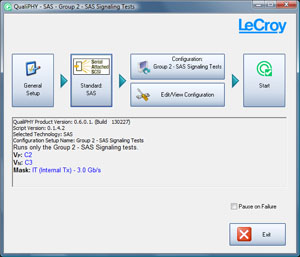
QPHY-SAS2 provides a highly automated and easy-to-use solution for SAS-2 configurations from 1.5 Gb/s to 6 Gb/s.
Powerful Debugging ToolsThe use of Spread Spectrum Clocking (SSC) in transmitted signals is an optional feature of the SAS-2 specification. When SSC is enabled, measurements such as frequency modulation rate and deviation must also be verified per the specification. The QPHY-SAS2 software works in conjunction with the deep memory and powerful analysis library of LeCroy oscilloscopes to greatly simplify this verification process. Clock recovery circuitry and clock extraction via Phase-Locked Loops (PLLs) is another significant design consideration. Flexible clock recovery options allow for the replication of virtually any real receiver PLL configuration enabling the simulation of "what if" scenarios. Jitter results can be measured exactly as the receiver would see them.
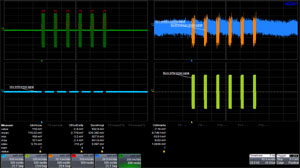
Out of Band (OOB) validation ensures that the maximum noise during OOB idle, OOB burst amplitude, OOB offset delta, and OOB common mode delta are all within the specification limits.
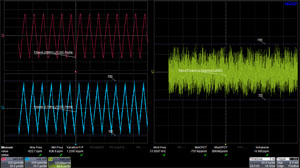
Spread Spectrum Clock (SSC) validation requires long memory and specialized analysis functions. LeCroy is the only manufacturer that can precisely track SSC profiles through multiple cycles in real time. SSC modulation frequency, deviation, balance and DFDT are all measured.
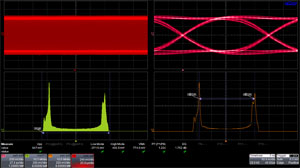
Peak-to-Peak Voltage, VMA and EQ measures the peak-to-peak amplitude, voltage modulation amplitude and transmitter equalization to ensure that these parameters are within the specification limits.
Comprehensive and Easy-to-read Test ReportsMeasurement results often need to be summarized and tabulated to quickly verify specifications. This information, together with instrument and signal acquisition/test condition setups, results in a fully documented record. QPHY-SAS2 streamlines this process by incorporating an automatic HTML report generation engine. The created test reports contain tabulated numerical values for each individual test result, including PASS/FAIL and specification limit columns. Reports can also be saved as PDF, HTML or XML.
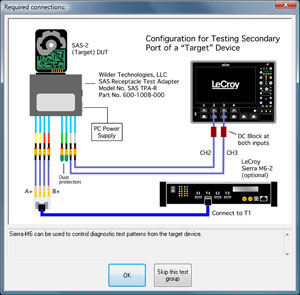
Connection diagrams prompt the user to set the DUT to output specific test patterns.
Advanced Debug CapabilityIf a compliance failure is found, LeCroy's SDA II serial data analysis package is available to help find the root cause quickly and easily. SDA II has the ability to perform Eye and Jitter measurements simultaneously and is fully integrated into the oscilloscope application software. In addition, SDA II provides insight into the measured Eye and Jitter parameters making it easier to identify the sources of problems.
QualiPHYQualiPHY is designed to reduce the time, effort and specialized knowledge needed to perform compliance testing on high-speed serial buses.
- Guides the user through each test setup
- Performs each measurement in accordance with the relevant test procedure
- Compares each measured value with the applicable specification limits
- Fully documents all results
- QualiPHY helps the user perform testing the right way every time!
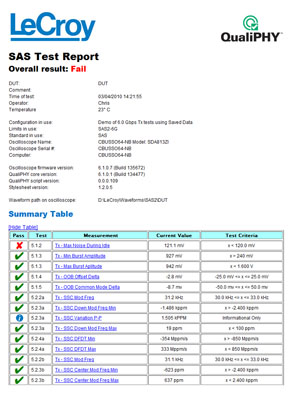
Compliance reports contain all of the tested values, the specific test limits and screen captures. Compliance reports can be created as HTML, PDF or XML.
Specifications
QPHY-SAS2 Test Coverage Specifications
| TEST 5.1.2 - TX MAXIMUM NOISE DURING OOB IDLE |
| TEST 5.1.3 - TX OOB BURST AMPLITUDE? |
| TEST 5.1.4 - TX OOB OFFSET DELTA? |
| TEST 5.1.5 - TX OOB COMMON MODE DELTA |
| TEST 5.2.2 - TX SSC MODULATION FREQUENCY? |
| TEST 5.2.3 - TX SSC MODULATION DEVIATION AND BALANCE |
| TEST 5.2.4 - TX SSC DFDT (INFORMATIVE |
| TEST 5.3.1 - TX PHYSICAL LINK RATE LONG TERM STABILITY? |
| TEST 5.3.2 - TX COMMON MODE RMS VOLTAGE LIMIT? |
| TEST 5.3.4 - TX PEAK-TO-PEAK VOLTAGE |
| TEST 5.3.5 - TX VMA AND EQ (INFORMATIVE)? |
| TEST 5.3.6 - TX RISE AND FALL TIMES |
| TEST 5.3.7 - TX RANDOM JITTER (RJ)? |
| TEST 5.3.8 - TX TOTAL JITTER (TJ)? |
| TEST 5.3.9 - TX WAVEFORM DISTORTION PENALTY (WDP)* * WDP Test must be run manually using the SASWDP MATLAB script. This is not automated by QPHY-SAS2" |
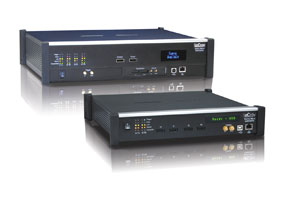 |
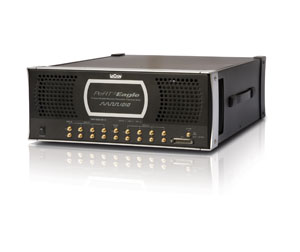 |
| The Sierra Protocol Test System is the 6th generation of SAS/SATA protocol test solutions from LeCroy, the leading manufacturer of protocol test systems. | The PeRT3?(Protocol-enabled Receiver and Transmitter Tolerance Tester) fills the space between physical layer test and protocol test, providing performance testing of receivers and transmitters |

 我要赚赏金
我要赚赏金

